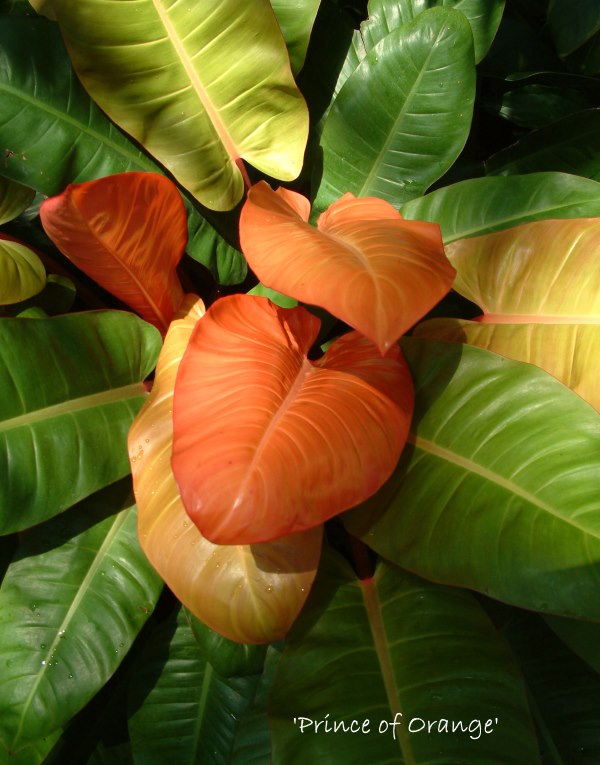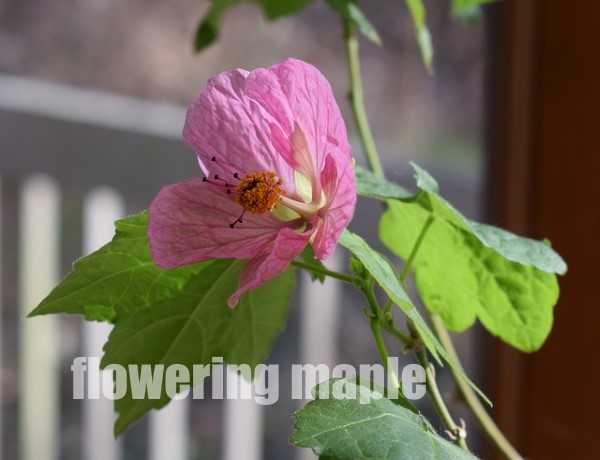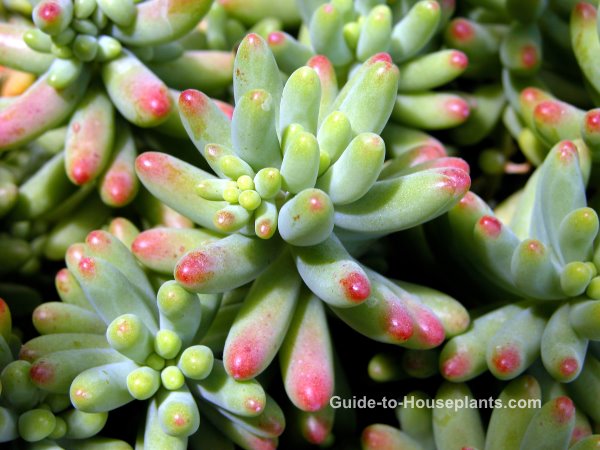Philodendron 'Prince of Orange'
Vibrant orange leaves unfurl from Philodendron 'Prince of Orange' -- a stunning hybrid from an easy-care family of plants.
New orange foliage changes to green as the plant matures. You can help this philodendron to grow colorful new leaves by giving it plenty of indirect sunlight.

Get to Know Your Philodendron 'Prince of Orange'
Philodendron 'Prince of Orange' is a manmade hybrid of Philodendron spp. from Central and South America.
Unlike its tree-dwelling relatives, this eye-catching philodendron hybrid won't climb. It is a clump-forming plant growing from a ground-hugging rosette.
Short, upright stems carry large, thick leaves. It will reach a height of about 2 ft tall (60 cm) and spread about as wide. The good news is that Philodendron 'Prince of Orange' won't need staking. But if it gets too leggy, you can cut off some of the stems to keep the plant in shape.
Big-leaf plants tend to be dust-catchers. Keep them clean by gently wiping them with a soft, damp cloth. Cleaning your plant's leaves not only keeps your houseplant healthy, it helps to stave off a pest infestation, too.
'Prince of Orange' Problems, Solutions and Answers
Wondering when to repot?
Move young plants to a pot 1-2 inches (2.5-5 cm) larger every year or two. Don't overpot -- a common mistake with houseplants. Why? A too-big container will hold too much water, which may cause root rot.
It is best to use a pot with drainage holes so you can water thoroughly without drowning your plant.
Want to use a decorative container without drainage holes? Use it as a cachepot -- just slip the plain nursery pot into the cachepot to cover it up. I put small rocks in the bottom of cachepots to keep the inner pot above the drainage water.
Here are the steps to repotting houseplants.
Something bugging your plant?
New leaves that are yellow speckled and crinkled are a sign of aphids. These sap-sucking insects attack soft, new growth on plants. Rinse off the leaves with tepid water, then treat your plant with insecticidal soap. Philodendrons seem to shrug off aphids once they've been treated. These pests usually only attack plants that have been outdoors.
White, cotton-like specks gathered at the base of the leaves are mealybugs. Carefully scrape them off the plant without damaging the stems. Isolate an infested houseplant and treat it right away. Find out how to get rid of mealybugs here.
Peaty potting mixes that are kept wet may attract fungus gnats. They are difficult to spot because they are black and crawl on the soil. These are more common indoors; and fortunately, easier to eliminate.
Is this Philodendron poisonous?
Yes, according to the ASPCA, all parts of the plant are toxic and the sap can cause skin irritation. Keep the plant out of the reach of children, cats and dogs. It is a good idea to wear gloves when pruning or repotting.
Philodendron 'Prince of Orange' Care Tips
Light: Although Philodendron 'Prince of Orange' will tolerate lower light levels, its leaves will maintain their color better in bright light. Keep your philodendron plant in a bright location, but not into direct sunlight which can scorch its leaves, causing dry, brown patches. It thrives under fluorescent light, too, making it an ideal office plant.
Water: Water thoroughly, then allow surface to dry out before watering again. Water sparingly in winter, when growth is slower, but don't allow potting medium to dry out. Yellow leaves are often caused by over-watering. Never allow the potting medium to become soggy, which can suffocate roots, leading to root rot; roots need air, too. Remember to always use tepid water for your houseplants because cold water is a shock to these warmth-loving tropicals.
Humidity: Try to maintain 50% relative humidity. Indoor air can become extremely dry in the winter. It's a good idea to use a humidity gauge, rather than guess. The most efficient way to boost indoor humidity for tropical plants is to set a cool-mist room humidifier near your plant. Brown leaf tips are a symptom of dry air.
Temperature: Average to warm room temperatures (70-85°F/21-29°C) year-round. Keep this tropical plant from cold blasts from windows and doorways, and away from heat/AC vents. It will tolerate a minimum of 60°F/16°C.
Soil: Peat moss-based mix with added perlite or vermiculite for good drainage. African violet potting mix is ideal.
Fertilizer: Feed Philodendron 'Prince of Orange' monthly spring through fall with a high-nitrogen liquid or water-soluble houseplant fertilizer that includes micronutrients. Feed every 2 months in winter, when growth is slower. Fertilize your houseplants when watering to prevent burning its roots.

